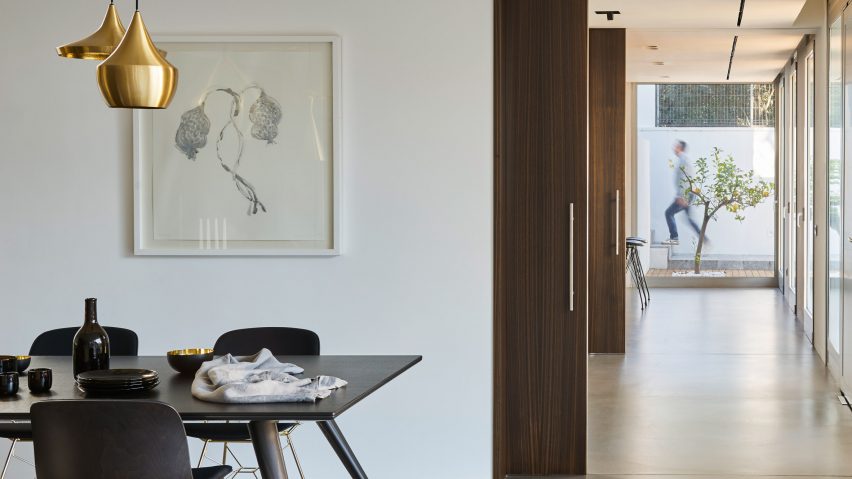
Spanish holiday home by YLAB Arquitectos frames coastal mountain views
Spanish firm YLAB Arquitectos has redeveloped a holiday home in Maresme, southeast Spain, to make the most of the coastal mountain-range views.
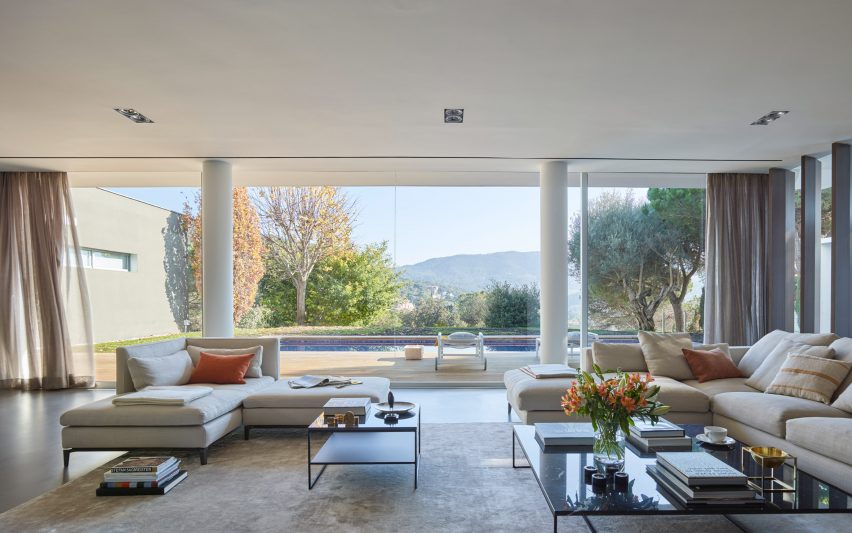
According to studio co-founder Yolanda Yuste López, the Scandinavian client's brief was to create a comfortable but luxurious holiday home that takes its cues from hotel design.
It also needed to be able to accommodate get-togethers with friends and family.
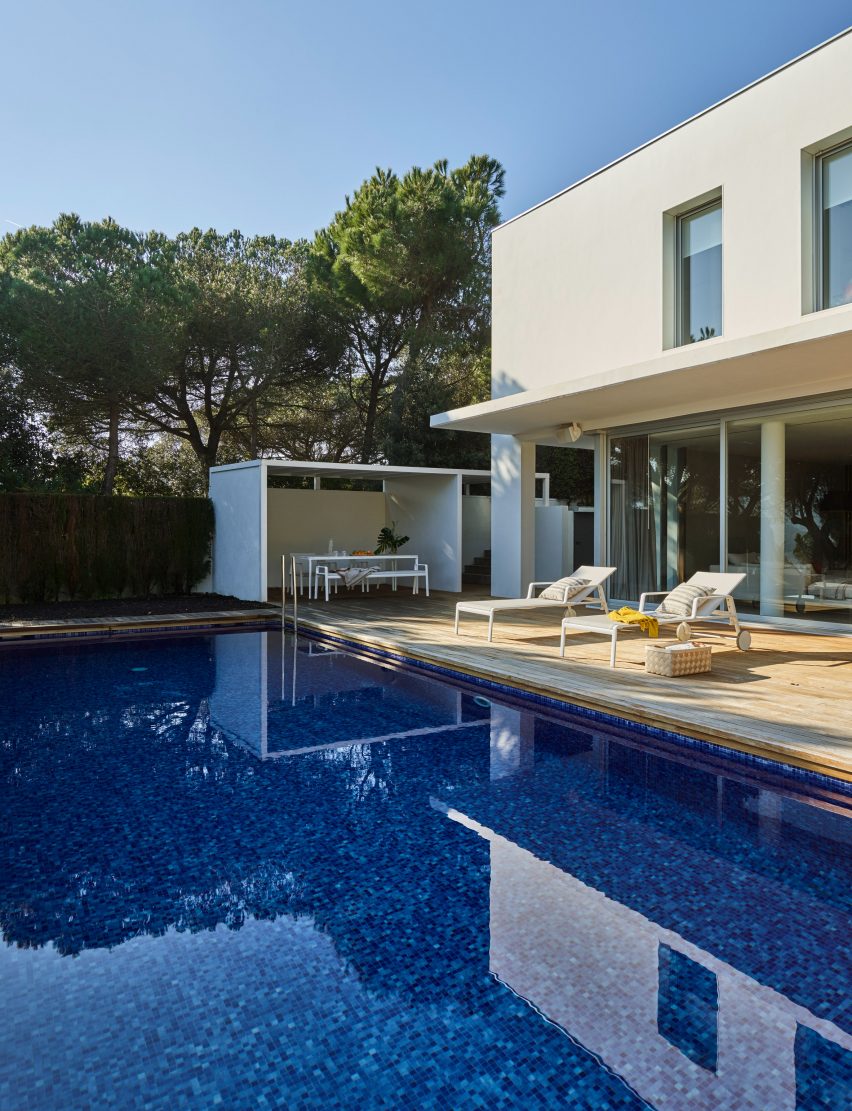
The main house, which sits at right angles to the garage and guesthouse, incorporates a flat roof that juts out at first-floor level, curving around a tree on the terrace and reaching across to touch the secondary building.
YLAB Arquitectos changed the internal layout of the existing 1980s house and removed partition walls. The main spaces are largely open plan, with large sliding doors, connected by corridors on each floor that run the entire length of the house's long axis.
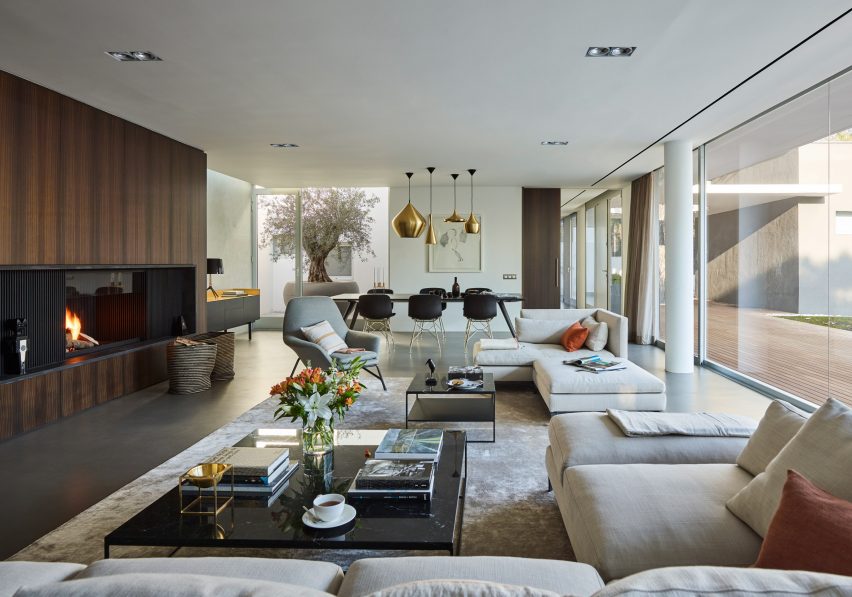
These corridors provide sight lines throughout the entire building and, on the ground floor, open out onto the large terrace and pool through sliding glass doors.
The large floor-to-ceiling windows on the ground floor and neutral materials used both inside and out help to visually link the interior and exterior areas. The window at the far end of the corridor perfectly frames a lemon tree – a recurring motif throughout the design.
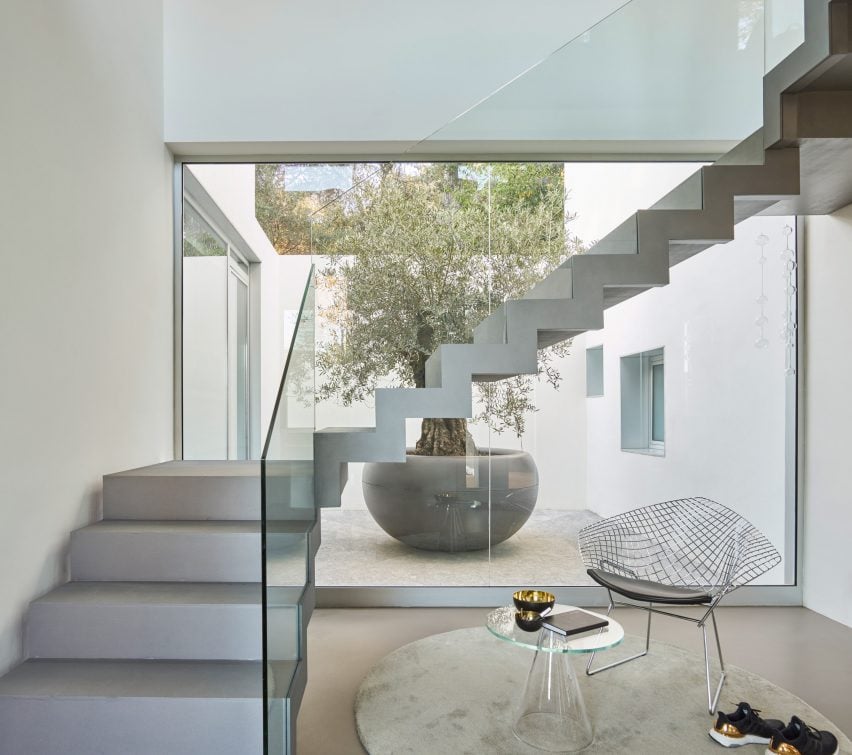
In the middle of the house, the glass-sided staircase zig-zags across a vast window that forms one side of an internal courtyard containing a mature olive tree, almost bringing the natural environment into the house.
"We brought life into the courtyard with this huge olive tree, so there is always a connection to the surrounding nature," said Yuste López.
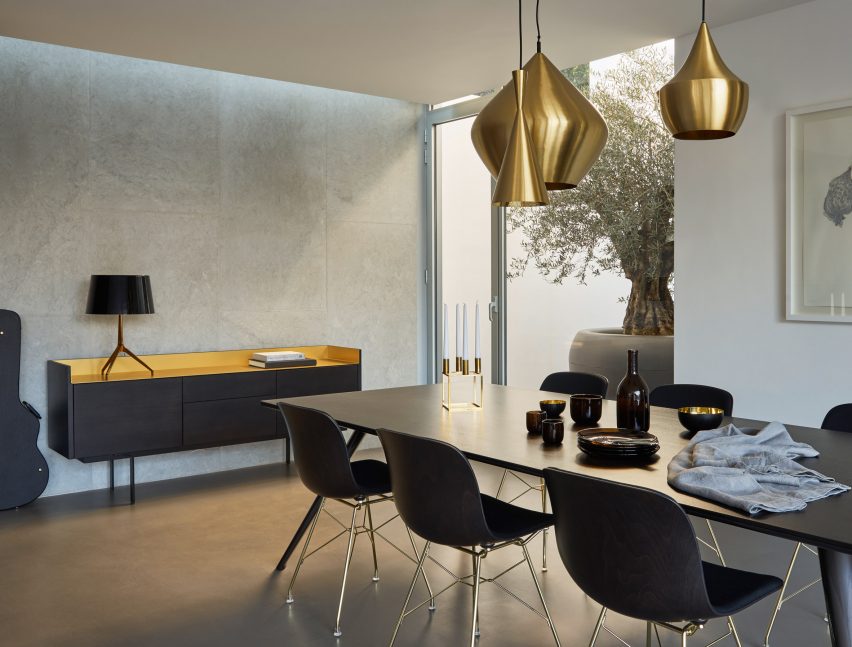
Internally, the different areas of the house are brought together by the continuous cement floor and limited palette of neutral, but luxurious materials.
The spacious living area features pale grey sandstone wall cladding, and a custom-made wall unit in tobacco wood, which integrates the black steel fireplace, entertainment system and storage.
In the adjacent dining room, a dark lacquered table and brass-legged chairs sit beneath a set of beaten brass Tom Dixon pendant lamps.
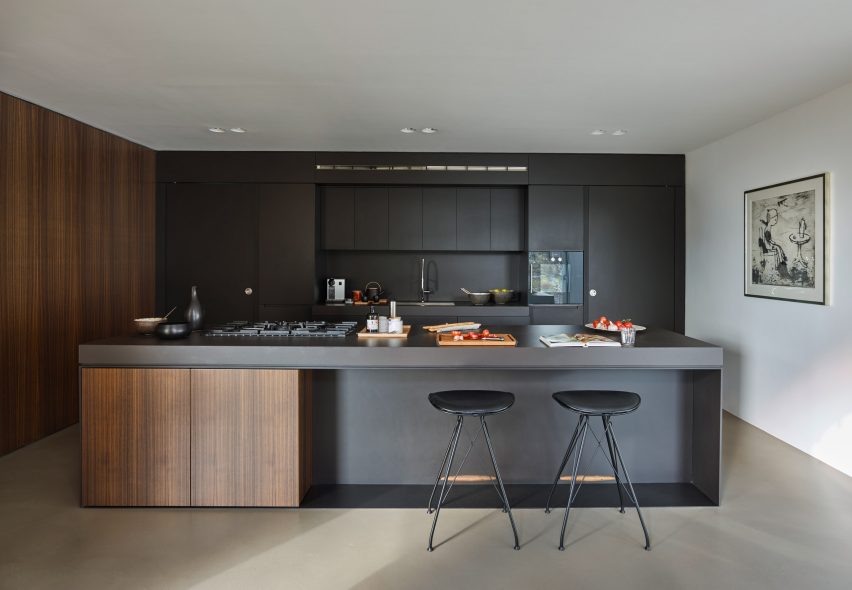
The kitchen is designed with a central unit between two sliding doors, which separate the eat-in kitchen at the front of the building from a bathroom and auxiliary kitchen at the rear.
The large central island, which contains a cooking top and informal dining area, is covered with a dark Neolith worktop slab. The bespoke kitchen is finished in a dark coffee lacquer and matching backsplash.
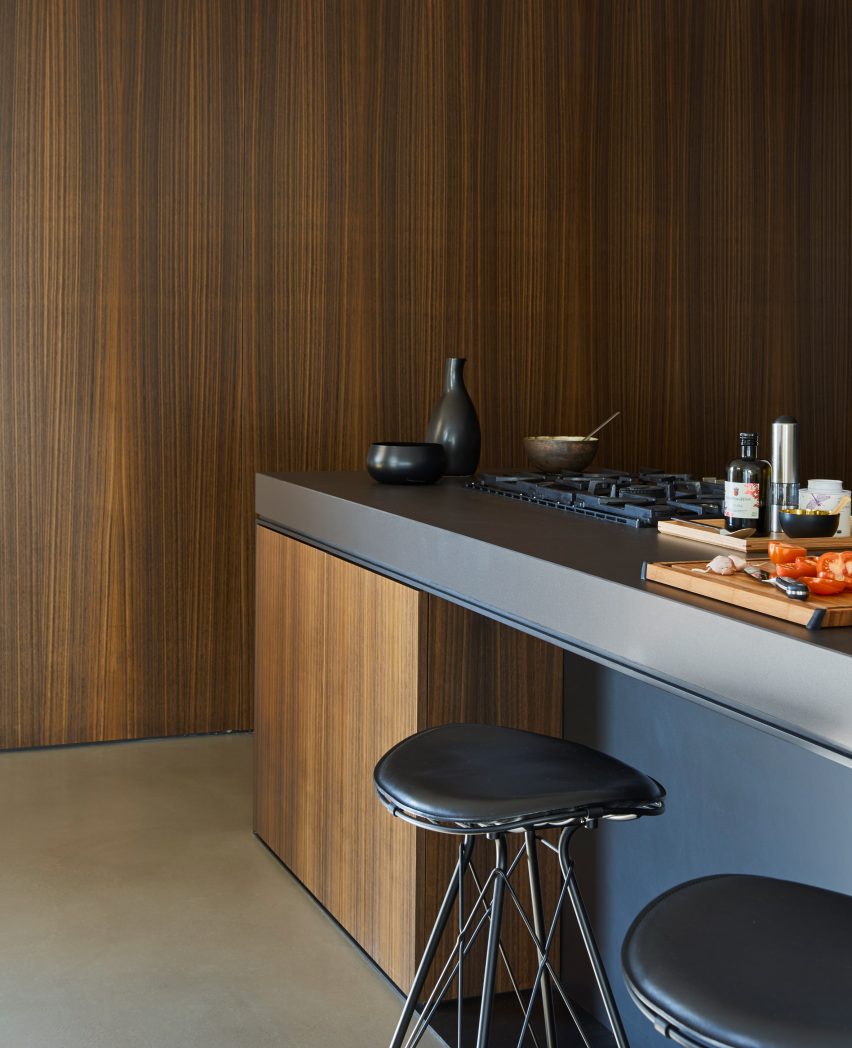
"Everything is reduced to a very limited colour range, different materials that appear almost the same for a very minimalist, highly integrated look," said Yuste López.
"Even the cement floor was mixed with pigments to create a slightly lighter shade of brown than the stone worktops, and it was given a satin finish to delicately reflect the light streaming in from outside."
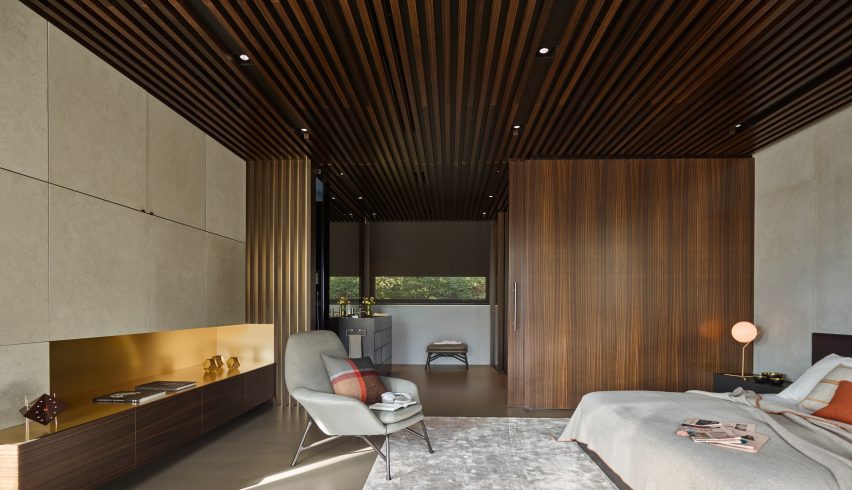
Upstairs, the master bedroom features a grey sandstone panelled wall unit with a recessed shelf clad in brass with wooden drawers. The walnut slatted ceiling interlocks with vertical wooden slats tipped with brass that run down one section of the wall.
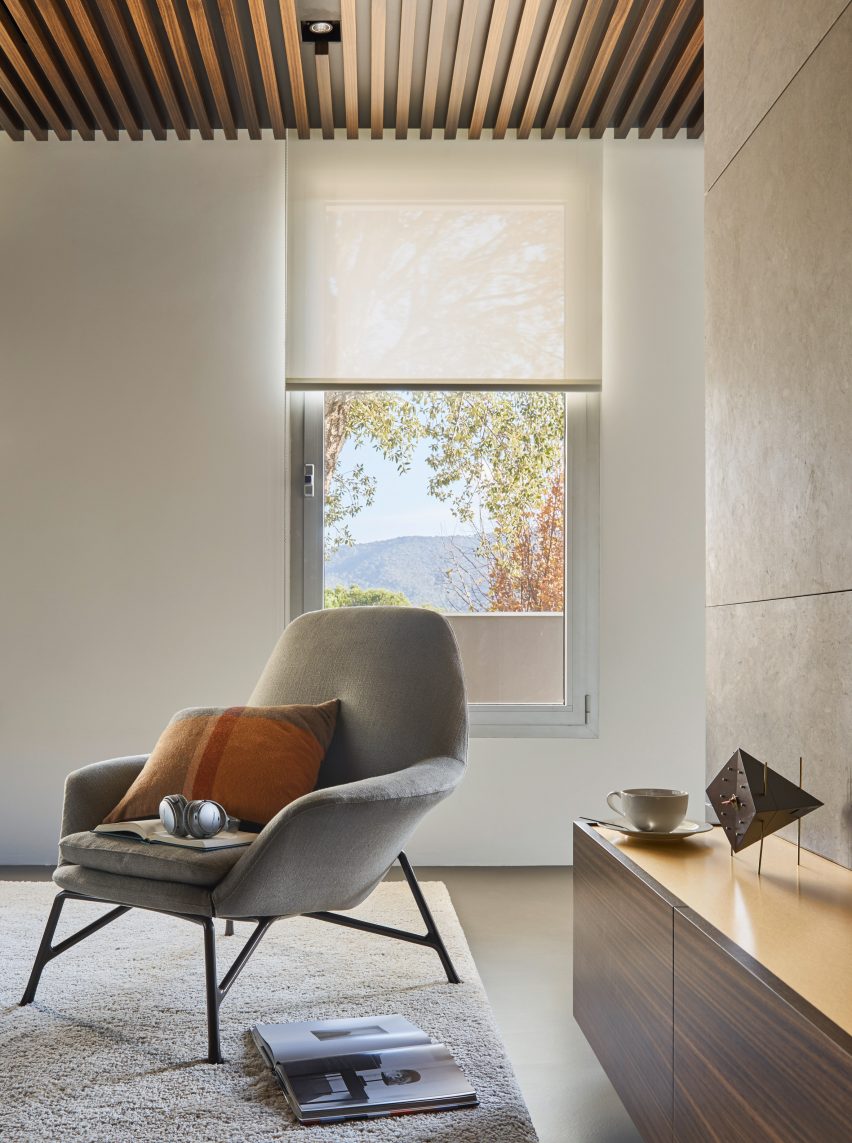
A large wooden sliding door leads through to the bathroom, which is dominated by a large free-standing washbasin. Tinted doors provide access to the more private areas.
"The interplay of materials and brass elements make it feel very luxurious, but it's also cosy, almost like a wooden holiday retreat," said Yuste López.
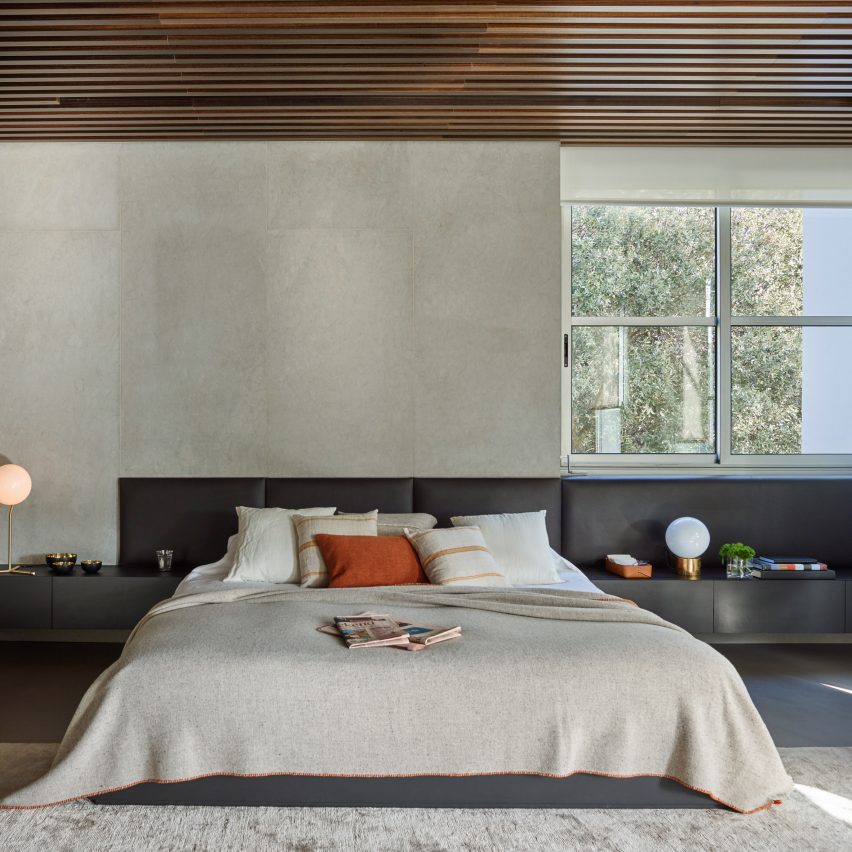
The slatted ceiling runs throughout the upper floor but tapers into a narrow strip at the other end of the property where the children's rooms are located. López says this was done to provide continuity without dominating. While the wall colour and floors tie in with the rest of the house, the design here is more playful.
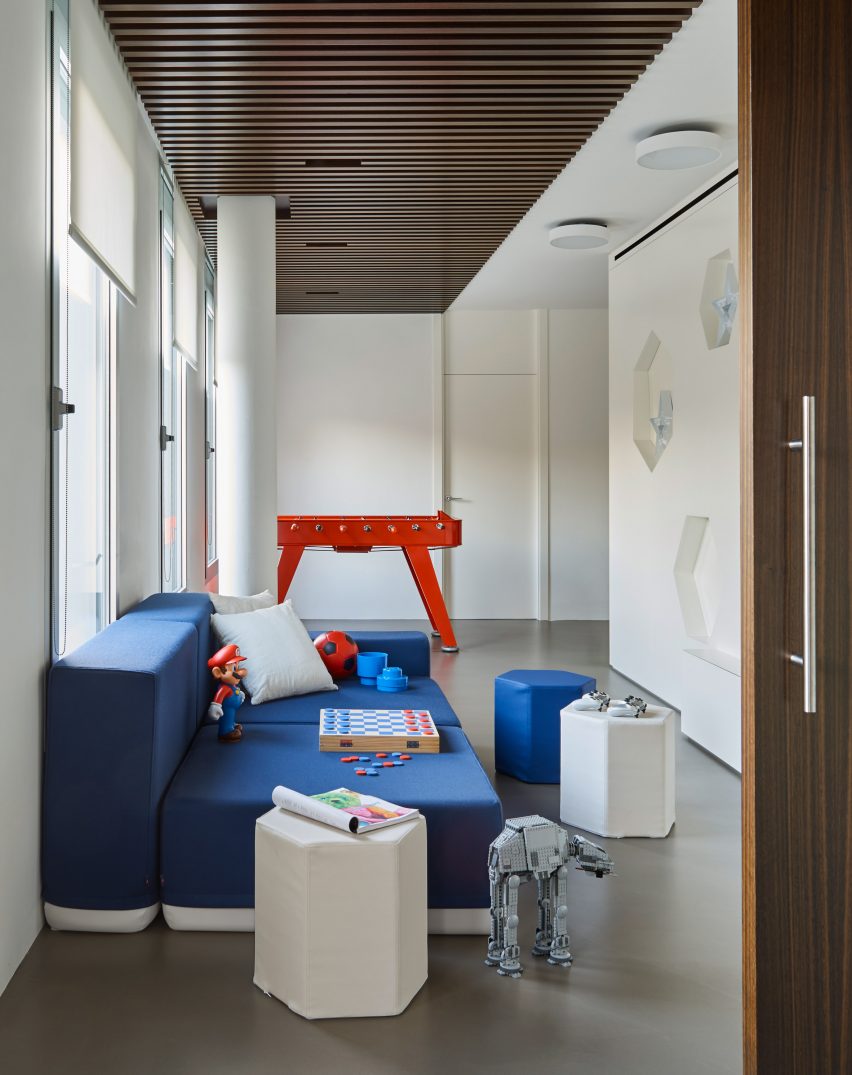
To furnish the children's rooms, YLAB selected a chunky modular sofa and football table in the primary colours of the children's favourite football teams, as well as a bright green sink made of a soft foam in the bathroom.
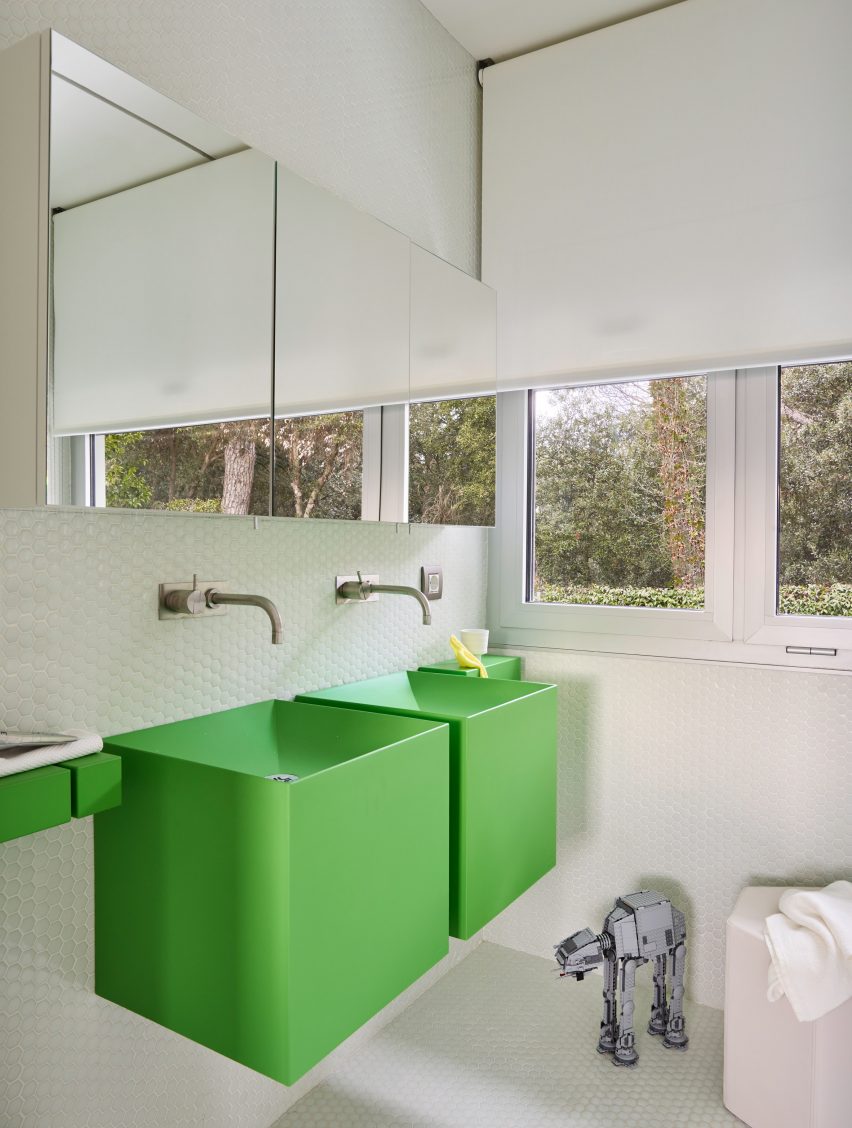
The surface on the bathroom walls is made up of hexagons that recall the stitching on a football. This hexagonal shape is repeated in recessed display units as well as the stools in the play area.
Photography is by Eugeni Pons.